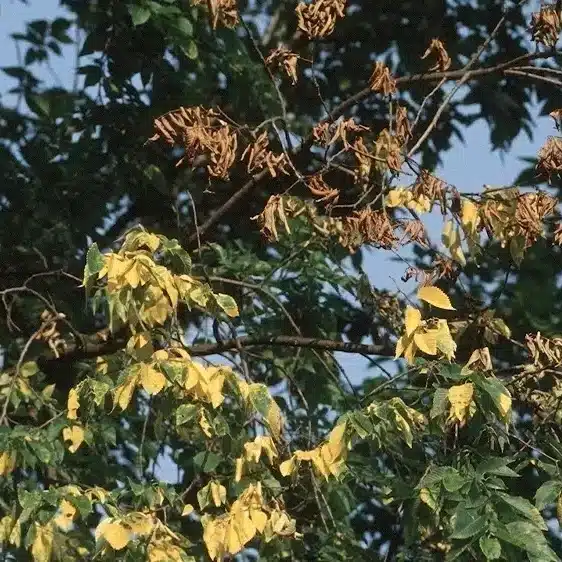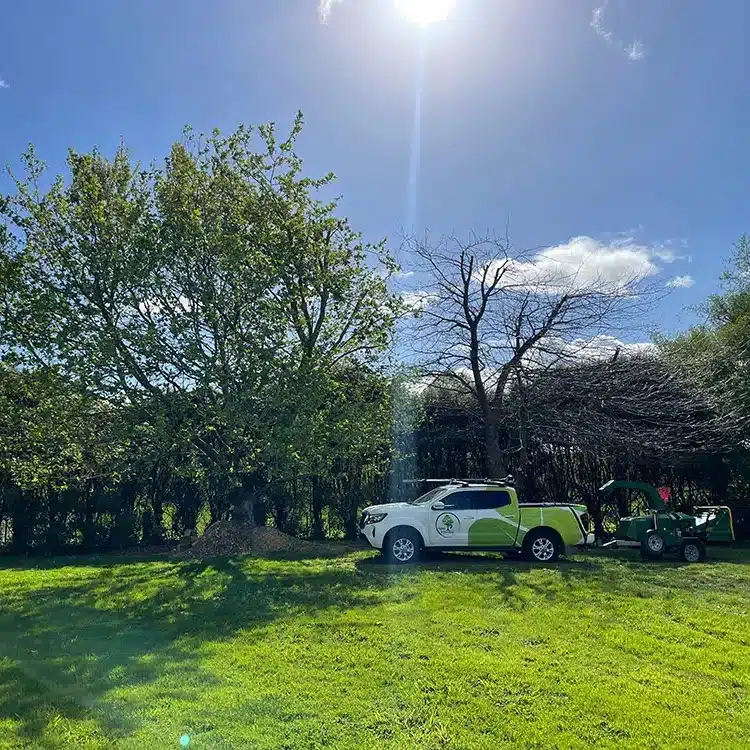
Wondering how to protect your trees from the bracing winds of Wellington or the dry summers of Canterbury? Look no further. New Zealand’s varying climate conditions significantly impact tree care practices, from the humid subtropical north to the cooler southern regions. Our seasonal tree care guide is your comprehensive handbook for nurturing trees through New Zealand’s shifting seasons. Get an arborist’s advice on pruning, watering, and pest control right when you need it to keep your trees resilient all year long.
Key Takeaways
-
Spring tree care is crucial, involving inspection for winter damage, pruning, managing pests with companion planting, and applying mulch to protect soil moisture.
-
Deep watering techniques are essential for tree health, significantly as temperatures rise, promoting root growth to guard against drought, while new plants need special attention for watering.
-
Year-round maintenance, including seasonal pruning and organic fertiliser, bolsters tree growth and health, while a diverse ecosystem with companion plants enhances garden resilience.
Spring Tree Care: Ensuring Healthy Trees
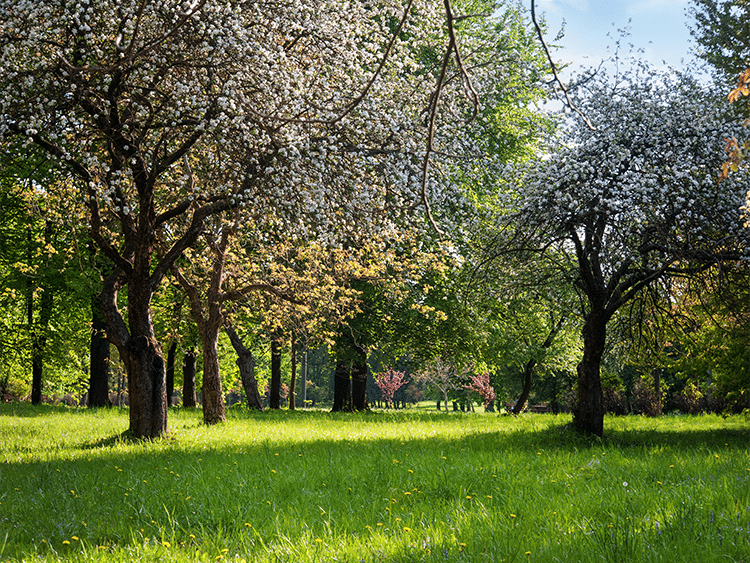
The arrival of spring is akin to nature’s grand orchestra tuning up before a performance. As the melody of warmer days begins, trees awaken from their winter slumber. This period of renewal calls for a heightened level of vigilance in spring tree care. Inspecting trees in early spring is a critical first step to uncover the toll that winter may have taken. Damaged branches, whether broken by stormy weather or burdened by disease, are more than mere eyesores – they’re indicators of potential problems that could escalate if left unchecked. To ensure the health and beauty of your trees, follow these spring tree care tips.
Early spring sets the ideal pace for pruning trees, including young ones, preventing weed growth, and establishing a foundation for healthy development throughout the upcoming seasons.
Identifying and Removing Damaged Branches
When inspecting trees, what should you look for? Watch for telltale signs of damage, such as fungal growths that cling to your tree’s base or broken branches that disrupt the canopy’s silhouette. These are not just cosmetic issues; they serve as open invitations for diseases and pests to infiltrate and further weaken your trees.
The remedy? Remove dead branches and ensure that affected wood is cut away and disposed of properly to prevent the spread of wood decay fungi. This is not only about the tree’s immediate health but also about protecting the entire garden ecosystem.
Managing Pest Infestations Early On
The battle against pests and diseases is waged with foresight. Early spring is crucial to inspect trees for any sign of these unwelcome visitors. After all, a tiny pest infestation can become a siege by summer if not addressed promptly. But how do you keep the pests at bay? The answer might surprise you: it’s not just about chemicals; it’s about companionship. Early pest management also plays a significant role in disease prevention.
Companion planting is a natural strategy. The humble celery plant can deter the white cabbage butterfly, and the pairing of carrots and leeks uses their aromatic powers to repel pests. Integrating such plant allies into your garden fosters a natural defence system that protects your trees and plants, promoting a healthier, more resilient green space.
Mulch Magic: Enhance and Structure
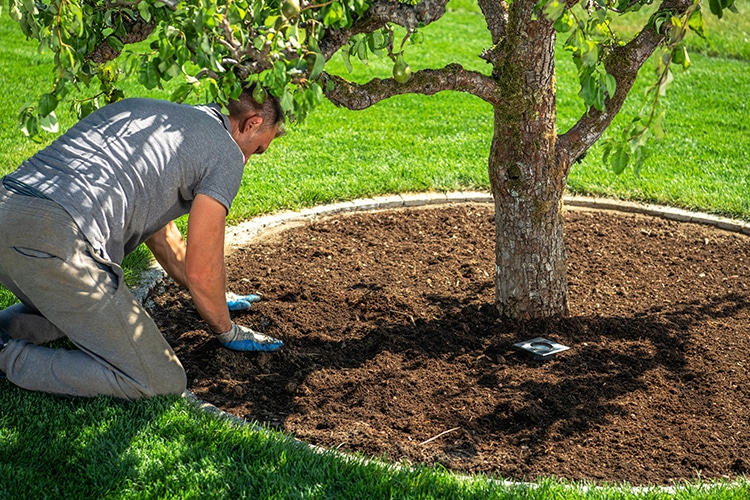
As spring marches on, it’s time to work some mulch magic. This organic material, rich in organic matter, is more than just a decorative dressing for the soil surface—it’s a vital component in maintaining soil moisture and enhancing soil structure. When you apply mulch to calm the tree’s base, you create a barrier that cuts down on weed growth and helps the soil retain that precious moisture as the days grow warmer.
It’s a simple act with profound effects, like a blanket that helps the roots of your trees and plants stay hydrated, calm, and well-fed with nutrients as they prepare for the dry summer months ahead.
The Right Way to Apply Mulch
But let’s not sprinkle mulch haphazardly. The art of mulching is all in the technique, especially around the root flare. Your trees crave a consistent layer of organic mulches like bark or wood chips, kept at 2 to 4 inches deep. Remember to steer clear of the trunk, allowing the root flare to breathe freely—a practice that prevents the dreaded ‘volcano mulching‘ and its associated risks.
By applying mulch correctly, you’re conserving moisture and fostering an environment that allows the soil structure to improve over time, promoting the healthy growth of trees and plants alike.
Hydration Techniques for Thriving Trees
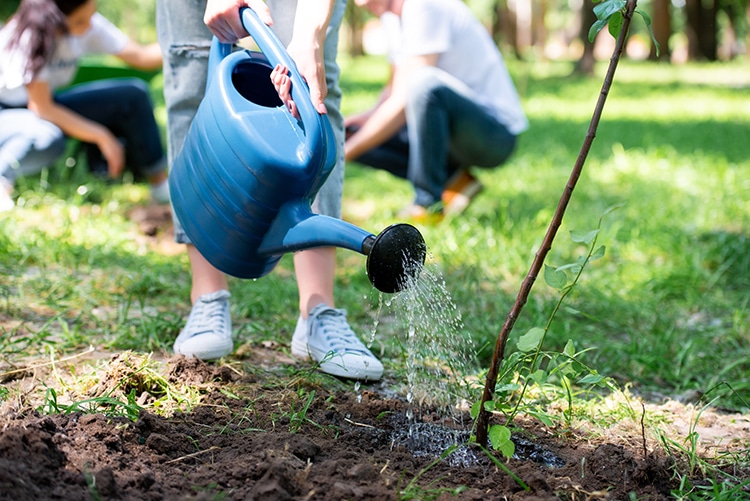
Water is the lifeblood of the garden, and as the spring sun climbs higher, ensuring that your trees receive the hydration they need becomes paramount. The key is deep watering, a technique that encourages roots to reach further into the soil, fortifying the tree against the perils of drought.
Rather than shallow, frequent watering, a deep soak once a week can be the difference between a tree that merely survives and one that truly thrives. As you prepare for the hotter, drier summer months, consider mulching and possibly installing an irrigation system to optimise those moisture levels.
Watering Wisdom for New Plantings
Newly planted trees are like infants of the garden—they need special attention when it comes to watering. One effective method is to create a watering basin around each new tree, a saucer-shaped depression that acts as a cradle for water, ensuring it soaks down to where it’s needed most: the roots. This practice, essential in planting trees, supports the tree during its formative early stages, helping it lay down the roots that will anchor it for years.
Winter Watchfulness: Protecting Trees During Dormancy
Winter’s chill signals a time for trees to enter dormancy, a period of rest where deciduous trees shed their leaves and conserve water in preparation for the cold ahead. It’s a natural process, but it doesn’t mean our trees are impervious to winter’s harsh embrace. In particular, young and newly planted trees may need extra protection through tree guards or wraps to shield them from cold injuries and animal damage.
Even potted plants and trees, especially vulnerable during winter, may require relocation to more sheltered spots to ensure their survival until spring returns.
Shielding from Winter Elements
While specifics for shielding trees from winter’s harsh conditions are not provided, extra protection is crucial to prevent cold injuries. We know that general care and attention to tree health can make a difference. Ensuring proper care during the warmer months sets your trees up for a stronger stance against the cold, emphasising the importance of year-round attention.
Fertiliser Fundamentals: Feeding Your Trees
To thrive, trees need more than just water and sunlight—they need nutrients. Fertilising in spring and autumn offers your trees the sustenance they need to bolster their growth and fortify themselves against pests, diseases, and summer stress.
By incorporating organic matter like compost into the soil, you’re feeding your trees and enhancing the soil’s ability to retain water and maintain a robust structure, supporting the tree’s base and overall health.
Choosing the Correct Fertiliser
However, not all fertilisers are created equal. For the best results, you are choosing a fertiliser that matches the specific needs of your tree and soil conditions.
Organic fertilisers, which align with the use of natural materials in the garden, can be particularly effective in feeding trees in New Zealand, sustainably supporting their growth.
Year-Round Pruning Practices
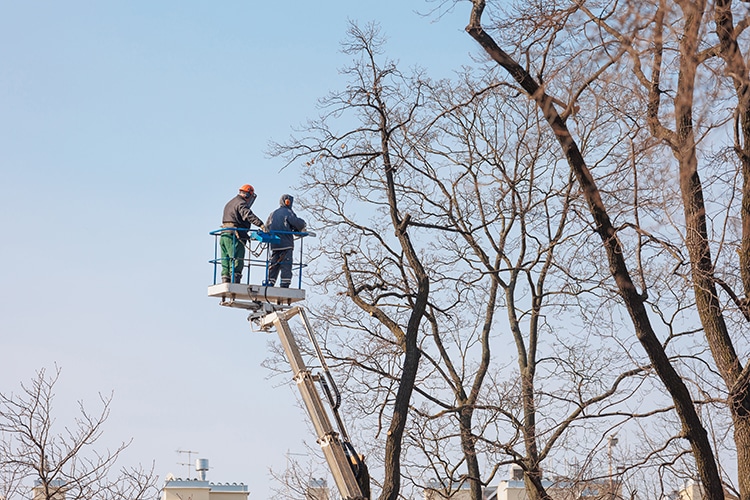
Tree pruning is an art that serves multiple purposes throughout the year. It promotes healthy growth, maintains the tree’s structural integrity, and can significantly reduce the spread of disease. But it’s not just about cutting back branches; it’s about using the right tools and techniques, ensuring that each cut is clean and precise and sanitising the tools between trees to prevent disease transmission.
Seasonal Pruning Schedules
Each tree species has unique pruning needs, which vary throughout the seasons. While some trees may benefit from a trim after leaf fall, others may require attention in early spring or at regular intervals throughout the year. Engaging a professional arborist in spring can ensure proper care is administered, catering to the specific needs of each tree species and allowing their full potential to unfold as the growing season progresses.
Cultivating a Diverse Garden Ecosystem
A garden’s health is not determined by its trees alone; it’s the collective result of all its plants. Cultivating a diverse range of trees and plants through diverse planting strategies encourages a balanced ecosystem that can significantly enhance each tree’s resilience and health.
By implementing diverse planting strategies, you can minimise the chance of injury and disease, ensuring that your garden is not just a collection of plants but a thriving, interconnected community.
Companion Plants for Healthy Trees
Companion plants are the unsung heroes of the garden, working silently to support the health of your trees. Nitrogen-fixing plants like peas and beans enrich the soil, while marigolds and certain herbs naturally ward off pests.
Flowers such as calendula and borage attract pollinators, which are vital for the ecosystem and play a key role in the pollination process of your plants.
Summary
Throughout this article, we’ve shared a tapestry of techniques, each woven to nurture and sustain the trees within your New Zealand garden. Embrace these seasonal rhythms, and you’ll witness the flourishing of healthy growth and contribute to the enduring beauty and vitality of your slice of paradise. From the vigilant spring inspections to the protective measures of winter, each season brings its tree care challenges and rewards.
Frequently Asked Questions
How do I know if my tree has been damaged during winter?
If you notice broken branches, fungal growths, or compromised bark on your tree, it likely has sustained winter damage and should be examined for necessary care.
Can mulch help my tree survive a dry summer?
Yes, mulch can help your tree survive a dry summer by retaining soil moisture, regulating soil temperature, and suppressing weed growth, thus contributing to the tree’s resilience.
When is the best time to water my trees in spring?
The best time to water your trees in spring is during the more excellent parts of the day, like early morning or evening, to minimise evaporation and deliver water effectively to the roots. Avoid midday watering to prevent rapid evaporation.
Should I prune my trees in winter?
Yes, you can prune your trees in winter to remove dead or diseased branches, but consider the specific needs of your tree species for the best timing.
What are the benefits of companion planting?
Companion planting provides benefits such as enhancing soil fertility, repelling pests, and attracting beneficial pollinators. It also contributes to the overall health and growth of trees in your garden, making it a great way to maximise your garden’s health.


